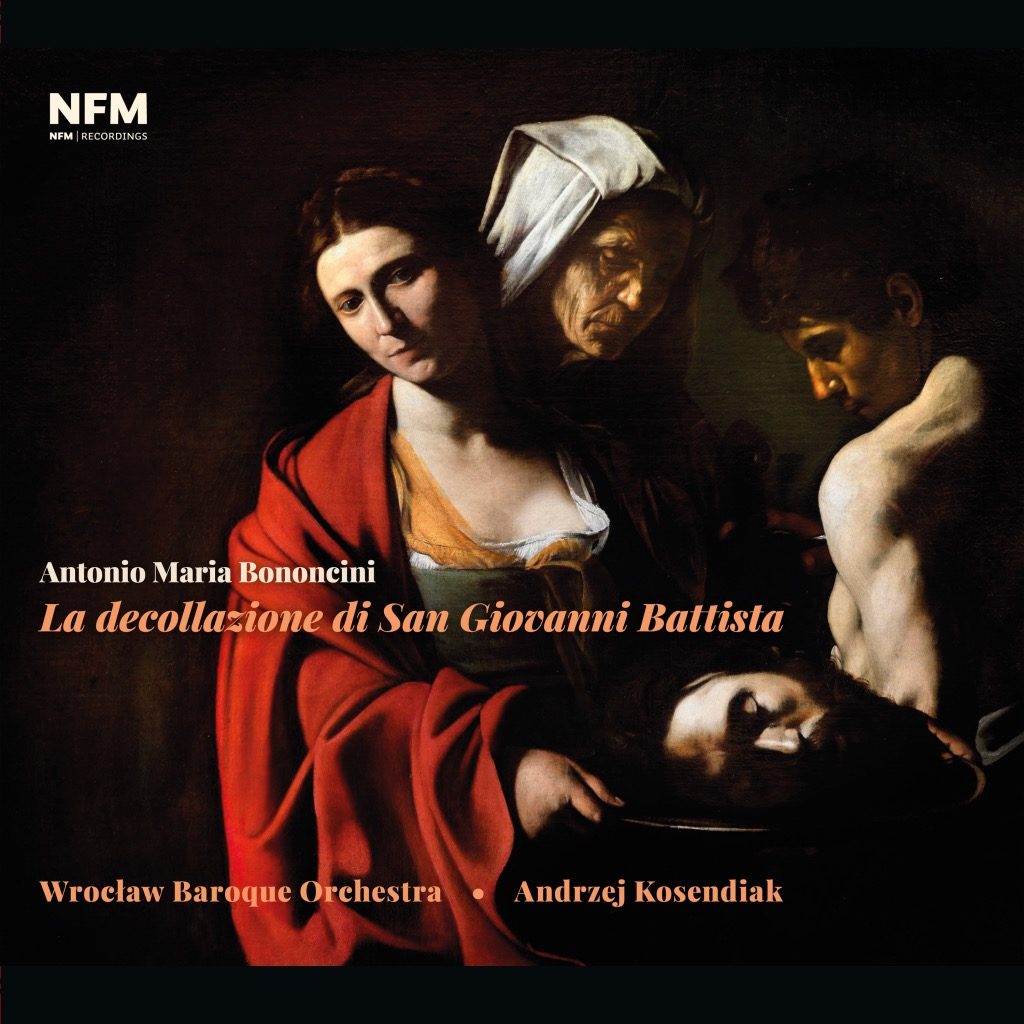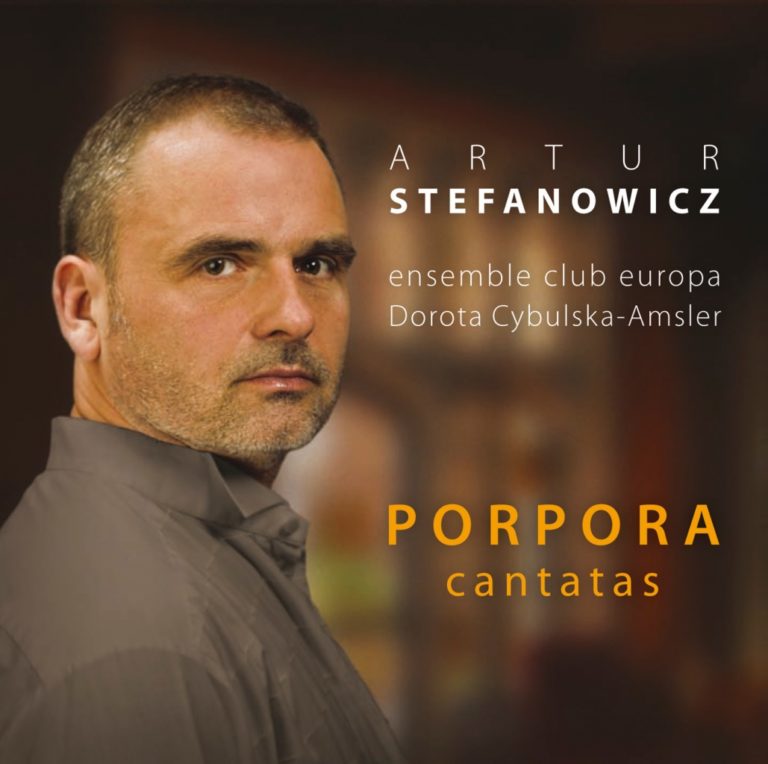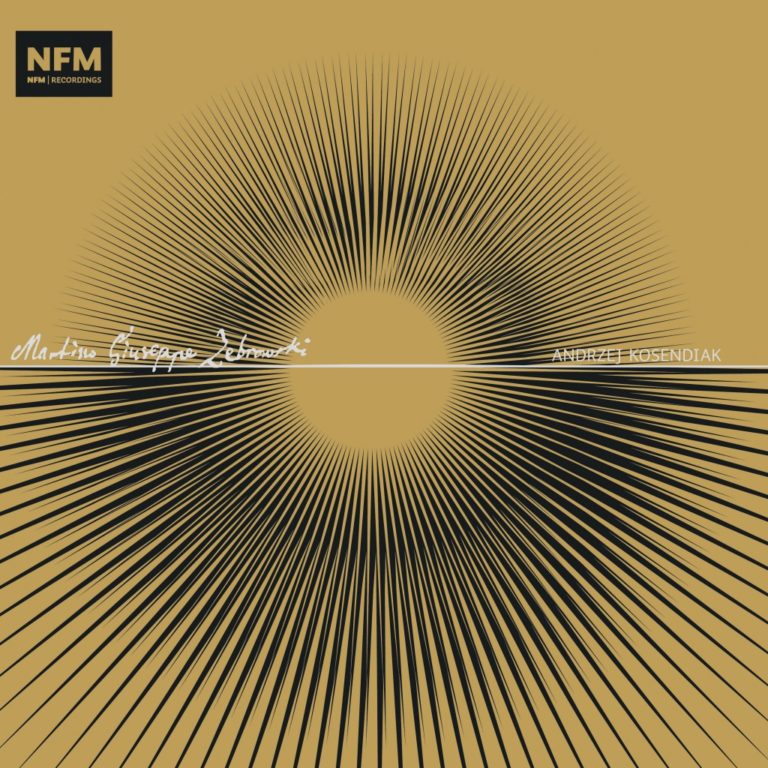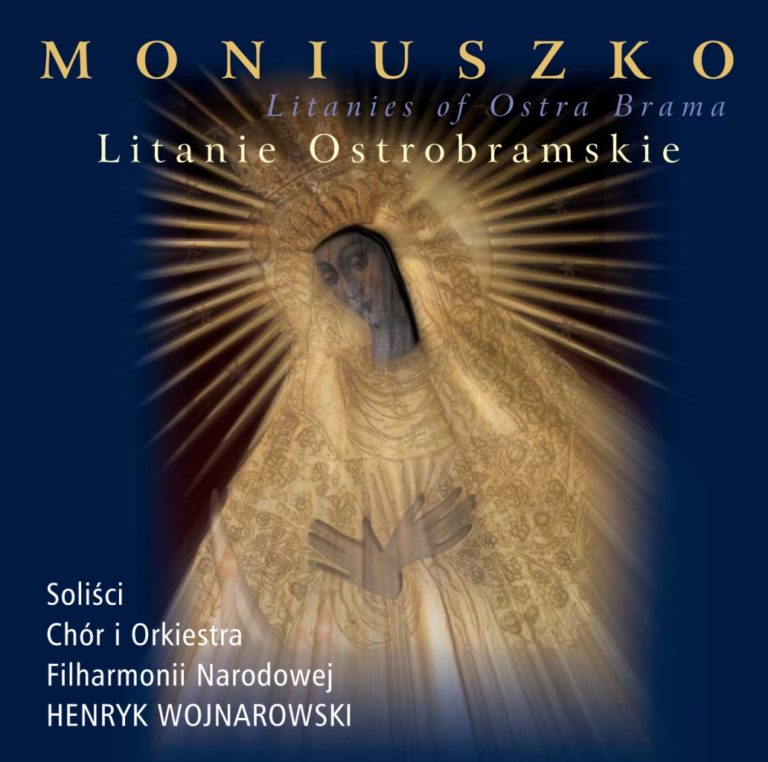
Bononcini – La decollazione di San Giovanni Battista
Ewa Marciniec – alto (San Giovanni Battista)
Bożena Bujnicka – soprano (Erodiade)
Aldona Bartnik – soprano (Salome)
Jaromir Nosek – bass (Erode)
Joanna Dobrakowska – mezzosoprano (Angelo)
Wrocławska Orkiestra Barokowa
Andrzej Kosendiak – conductor
RELEASE DATE: 05/2019
CATALOGUE NO. ACD 256
GENRE: oratorio and cantata music
Bononcini’s La decollazione was first performed during Lent of 1709 in the chapel of Emperor Joseph I in Vienna. The rather sober scoring of La decollazione for strings and continuo might be explained by the Lenten presentation, but the vocal and instrumental demands of the piece fully exploited the brilliance of the Viennese musicians, and their skill in opera. At the same time, Bononcini integrated his skills in counterpoint, normally associated with sacred music, throughout the work so that it presents as both worldly and spiritual.
This contrapuntal severity can be heard in the orchestral Introduction, the closing Coro Muore il giusto, sung by the 5 soloists, and several of the arias, particularly St John’s Bacio l’ombre, set in the dark key of F minor. The role of St John is sung by an alto, a vocal register often used for heroes in baroque opera, when they were performed by castrati with powerful lungs. The morally weak Herod is sung by a bass, while Herodias and Salome would both have been sung by soprano castrati representing women, and are given music that is especially sensuous in style. The duet Rieda pure sung by Herod and Herodias early in the piece would be an effective love duet in any opera of the time, and yet is also impressively contrapuntal, interlocking the lovers in the ways of earlier Italian madrigals.
Bononcini employs the convention of the da capo aria throughout the oratorio, but writes out the return of the A sections rather than using the shorthand of DC. However, at the dramatic turning point in the story, where Salome is singing the solo De la palme and we presume is dancing for the guests, Herod cuts her off with his passionate recitative Non più, deh cessa before she has even completed the B section. After that, he begins his offer of granting her a wish. While this break with musical convention might seem like a small thing today, in Bononcini’s time, it was a very unusual and vivid depiction of Salome’s erotic power and Herod’s weakness. His extended aria that follows is Nulla si neighi featuring two solo cellos, which we can speculate was played by the Bononcini brothers.
The La decollazione oratorio includes a lot of wonderful arias, some for just voice and continuo and others with full and brilliant string accompaniment. The work has been known and studied by scholars, but is now ready to be appreciated and admired by audiences. It may never be as popular as the oratorios of Handel or as vivid as the Strauss Salome, but this recording makes a valuable contribution by sharing a little known masterpiece with the world.
Brent Wissick, Professor of Music at University of North Carolina, Chapel Hill
ANTONIO MARIA BONONCINI
La decollazione di San Giovanni Battista (oratorio in due parti)
CD 1
1. Introduzione 3:19
Prima parte
2. Aria: Sorga omai l’ Alba lucente (Erodiade) 3:50
3. Recitativo: Ma no, de’ suoi bei raggi il sol (Erodiade, Erode) 1:11
4. Aria: Tutto attento il sol mirai (Erode) 3:07
5. Recitativo: Soffri mio Re (Erodiade, Erode, Battista) 2:38
6. Aria: Perché il sole (Battista) 2:21
7. Recitativo: Ma tu che fai? (Battista, Erode) 0:57
8. Aria: Omicida è la pietà (Erode) 2:08
9. Recitativo: Oh, di cieco pensiero ingannate follie! (Battista) 1:00
10. Aria: Parmi veder (Battista) 3:51
11. Recitativo: Mio sposo, mio signore (Erodiade, Erode) 1:38
12. Aria: Già costretta dal martir (Erodiade) 3:42
13. Recitativo: Erodiade, deh cessa dai rimproveri tuoi (Erodiade, Erode) 1:41
14. Duetto: Rieda pure / Torni pure (Erodiade, Erode) 4:02
15. Recitativo: Ecco a’ tuoi cenni (Salomè, Erodiade) 1:41
16. Aria: Si, cadrà la cervice sì temuta (Salomè) 2:46
17. Recitativo: Al prigionier Battista (Angelo) 1:14
18. Aria: Preziosa è quella morte (Angelo) 4:59
CD 2
Seconda parte
1. Aria: Festivi, giulivi, risuanate (Salomè) 2:10
2. Recitativo: Ma a regia mensa assiso (Salomè) 0:22
3. Coro: Rapido da te lungi 1:11
4. Recitativo: De la tua vita (Salomè) 0:32
5. Aria: De le palme c’ha l’Idume (Salomè) 0:54
6. Recitativo: Non più, deh cessa (Erode, Erodiade, Salomè) 2:10
7. Aria: Nulla si nieghi (Erode) 4:42
8. Recitativo: Ah, mio Rege adorato (Erodiade, Erode, Battista) 2:51
9. Aria: Bacio l’ombre e le catene (Battista) 5:25
10. Recitativo: In questo orror profondo (Angelo) 1:12
11. Aria: Con animo forte incontra la morte (Angelo) 3:32
12. Recitativo: Qual annunzio beato (Battista) 1:30
13. Aria: Tu che sei nume di pace (Battista) 2:36
14. Recitativo: Et ancora i tuoi voti (Angelo) 0:38
15. Aria: Tardi diviene all’ira (Angelo) 2:31
16. Recitativo: Figlia già fausto arride (Erodiade, Salomè) 1:01
17. Aria: Clizia, che amante del Sole (Salomè) 3:25
18. Recitativo: Signor, giacché (Salomè, Erode, Erodiade) 1:21
19. Aria: Il crin cingetemi (Erodiade) 2:04
20. Recitativo: Ecco, o Madre (Salomè) 0:26
21. Duetto: Ho vinto o figlia / Vincesti, o madre (Erodiade, Salomè) 0:44
22. Recitativo: Così d’empio livore (Angelo) 0:45
23. Coro: Muore il giusto 3:30
Total time: 91:34



